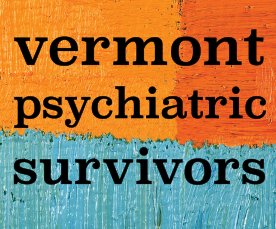The Vermont Agency of Human Services has drafted a rewrite of decades-old administrative rules that govern its advisory bodies. The potential update initially included the possibility of a merger between the State Program Standing Committees for Adult Mental Health and for Child, Adolescent and Family Mental Health, but committee members successfully opposed that part of the revision.
“The current state is the standing committees are not being combined,” Deputy Commissioner of Mental Health Alison Krompf told Counterpoint on Nov. 15. “They will remain autonomous, child and adult.”
According to Krompf, the state hadn’t fully developed or endorsed a consolidation plan in the first place.
“From my perspective, it was never proposed, but we could see how people thought it might be on the table,” Krompf said. “So we did examine the issue and decided not to go in that direction, and certainly the feedback is part of that.”
The State Program Standing Committees serve to give consumers and their families a voice in decisions made by the Department of Mental Health. In particular, they evaluate the performance of Vermont’s 10 nonprofit community mental health centers in order to help determine whether the state should continue to fund them to provide services on its behalf.
A similar advisory body oversees the private service providers contracted by the Department of Disabilities, Aging and Independent Living. DMH officials have pointed out that a single Developmental Services State Standing Committee has managed to represent DAIL clients of all ages.
DMH’s two committees must maintain rosters of nine to 15 members each. In addition, each of the ten community mental health centers currently hosts a parallel structure: a Local Program Standing Committee for adults and one for children. Per DMH, the community mental health centers have reported challenges finding enough volunteers, particularly for the latter.
“We would love to give the option, especially at the local level – if it makes sense, if the folks that are attending that committee want to, you could have one across-the-lifespan committee,” Assistant Director of Quality Eva Dayon said in early November.
Dayon acknowledged encountering resistance during preliminary outreach on the topic.
“I know that was the feedback we did hear from the Adult Mental Health State Program Standing Committee,” Dayon said. “They said, ‘We don’t feel qualified to speak to children’s mental health services, and please don’t force us to combine when we just had a conversation about potentially doing that and said very clearly we don’t think that’s appropriate at this time.’”
The adult committee reviewed the draft, which suggested a single committee of 10 to 15 members for mental health, on Oct. 9. When it came before the children’s committee on Nov 2, DMH hadn’t retracted the language, but Dayon reassured attendees that “our goal is not to force everyone to smoosh together.”
Zachary Hughes, the vice president of Vermont Psychiatric Survivors’ board of directors, serves on the adult committee. He spoke against the potential consolidation at the state level.
“I don’t really support that because there are different populations with different needs,” Hughes said. “At the local level, I think the agencies can do what they need to do.”
Hughes also argued against a possible change whereby the governor would no longer appoint the committee members, allowing the state’s commissioner of mental health to take charge.
“It’s such a monumental post,” Hughes said. “That’s how I feel about that sort of thing.”
Members of the children’s committee, however, voiced little pushback on that proposed revision.
“It just takes so long for it to get through the governor process sometimes,” Cinn Smith commented. “It’s irritating.”
Under the new administrative rules, the committees would continue to review the performance of each community mental health center as they do now, but the language enumerating their official responsibilities would change wholesale. Dayon characterized the rewrite as an effort to make the document more accessible.
“We’re trying to write in such a way that anyone can pick it up and understand what’s expected,” she said.
In this section, the revision would reduce ten bullet points in the original text to six. In doing so, it would replace several mandates that DMH present information about actions, services, policies, and grievances to the committee for review with instructions, instead, for the committee to provide input on the same or similar subjects.
For instance, while the current rules require the commissioner of mental health to “seek advice from the Committee” in the “hiring of key management,” the new language would permit the committee to offer “recommendations for candidates for classified leadership positions involved in the Agency Designation process.”
“The language is shorter, but that was done to make the rules listed more clearly and concisely and be really specific,” Krompf emphasized. “The intention of the state is to clarify language but not at all change the scope.”
DMH plans to hold “virtual forums” in December to gather more feedback. AHS may make adjustments to the proposed language in January before sending it to the Interagency Committee on Administrative Rules.
Next, the Secretary of State will host a six-week public comment period. Finally, the Legislative Committee on Administrative Rules will verify that AHS “followed all the steps in the right order,” as Dayon put it.
“Then we can decide if we’re going to actually go forward with trying to adopt this rule,” Dayon said.

